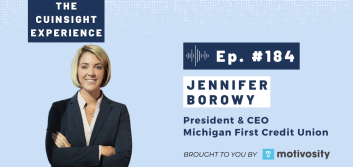Debt trends: How to spot and address potential delinquencies

Years of experience in collections services has shown me the importance of being proactive about member debt. Addressing potential delinquencies before they can happen fosters more financially healthy members and increases their trust in your credit union. Staying on top of debt trends can help with this goal. Below is a brief breakdown of the latest debt trends that could impact your members and practical steps your credit union can take to help.
Debt trends
With the growth of interest rates and inflation, about a third of cardholders have taken to using credit cards to pay for essential expenses (NerdWallet). This may help explain why credit card debt is on the rise with quarter two of 2023 showing 16.2% growth from 2022 (New York Fed). Now that the hold on student loan repayment has ended, many will also be juggling another $200-300 in their monthly budgets. Already tight financial situations aggravated by these debt trends could lead to delinquencies.
How your credit union can help
Credit unions, already well-trusted by members, are in a prime position to help members get in front of debt by offering relevant resources and products.
Resources/counseling
A good place to start is with the resources shared on your credit union’s website, social media accounts, emails, or wherever your credit union connects with members. Focus on relevant topics related to debt trends and the options for addressing them; for example, as student debt repayments resume, your credit union could share information on different payment plan options that may help reduce monthly payments. If your credit union offers financial counseling, highlight this service to members or consider implementing a financial counseling service with counselors who stay on top of the latest debt and economic trends.
Product offerings
Take stock of products and other offerings that might help members address their debt. Now would be a good time, for example, to offer a low rate or no rate balance transfer fee to help members consolidate their credit card debt. Highlight or add other offerings to the mix of your available debt-related tools, such as personal loans with low interest rates. Credit card rewards like cash back can also be helpful to members, especially as 25% of cardholders use rewards to help pay for essential expenses (NerdWallet).
Review who is at risk
Make the most of your resources by identifying members who might benefit the most from them. Do you have younger members who may be recent college grads wondering how they’re going to make payments on their student loans? What is the average income for the zip codes you serve? Members with low incomes or student loans would be among the most likely to be interested in debt-related resources.
A more granular look at member behavior and attitudes can also further pinpoint people who might be interested in debt management assistance. Fintech tools that allow members to manage their credit debt in one place can reveal to your credit union who might benefit from offerings like personal loans. Member surveys via your website or emails offer another way to gain insights on what resources members want.
Staying on top of member debt and related trends will help your credit union offer the most relevant products and resources possible to members. By pinpointing who at your credit union is likely to be most impacted by debt trends, you can also do a better job at connecting members with helpful resources. All together, these tactics can produce more impactful results that help members stay on top of rising debt, avoid delinquency, and build strong financial health.
At Envisant, we work with credit unions to create customized portfolios that fit member needs as well as help undertake the delicate work of collecting on delinquent accounts. Our compassionate, solution-seeking team puts people first. To learn how we can help, contact us at 1-800-942-7124.





